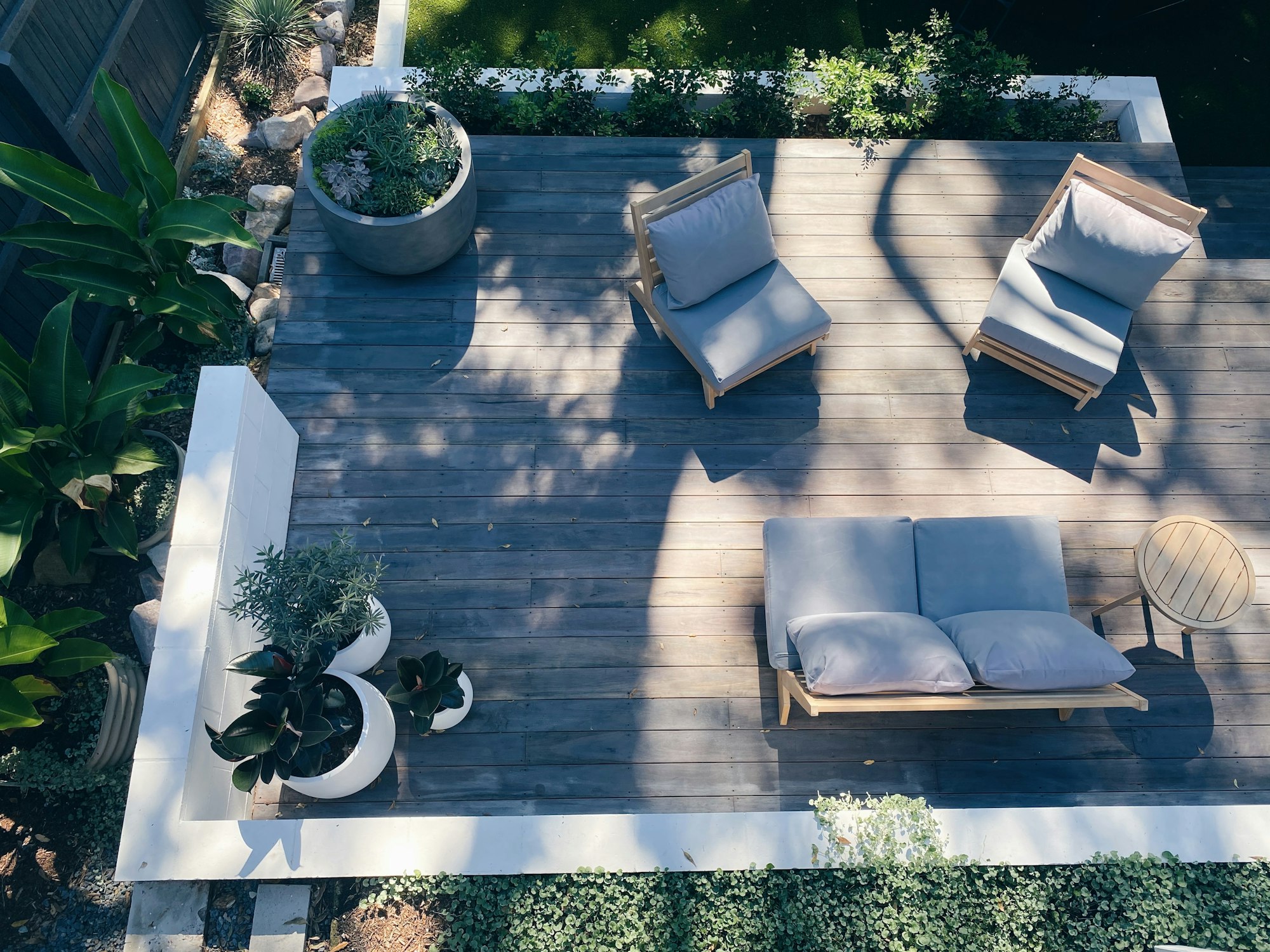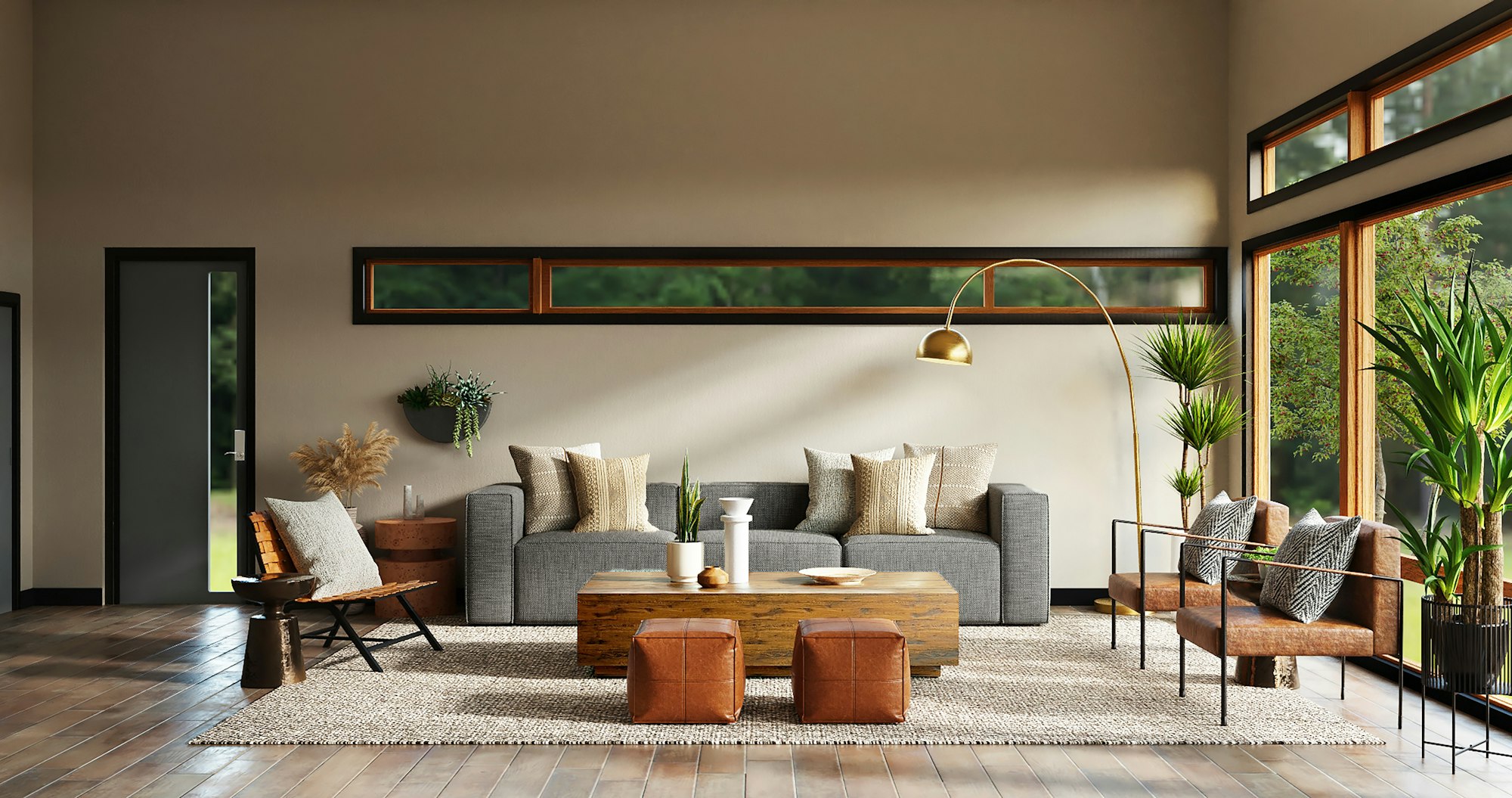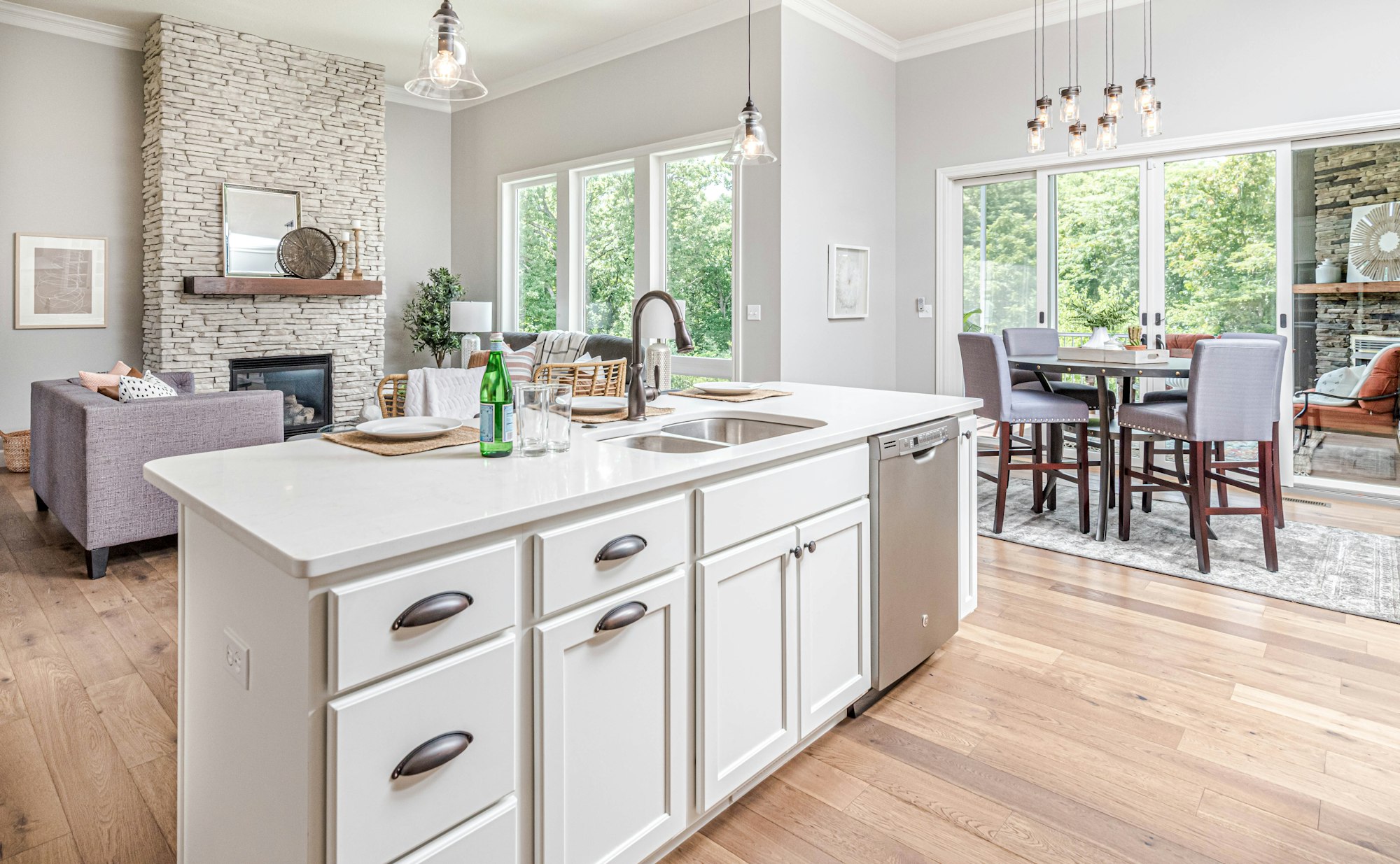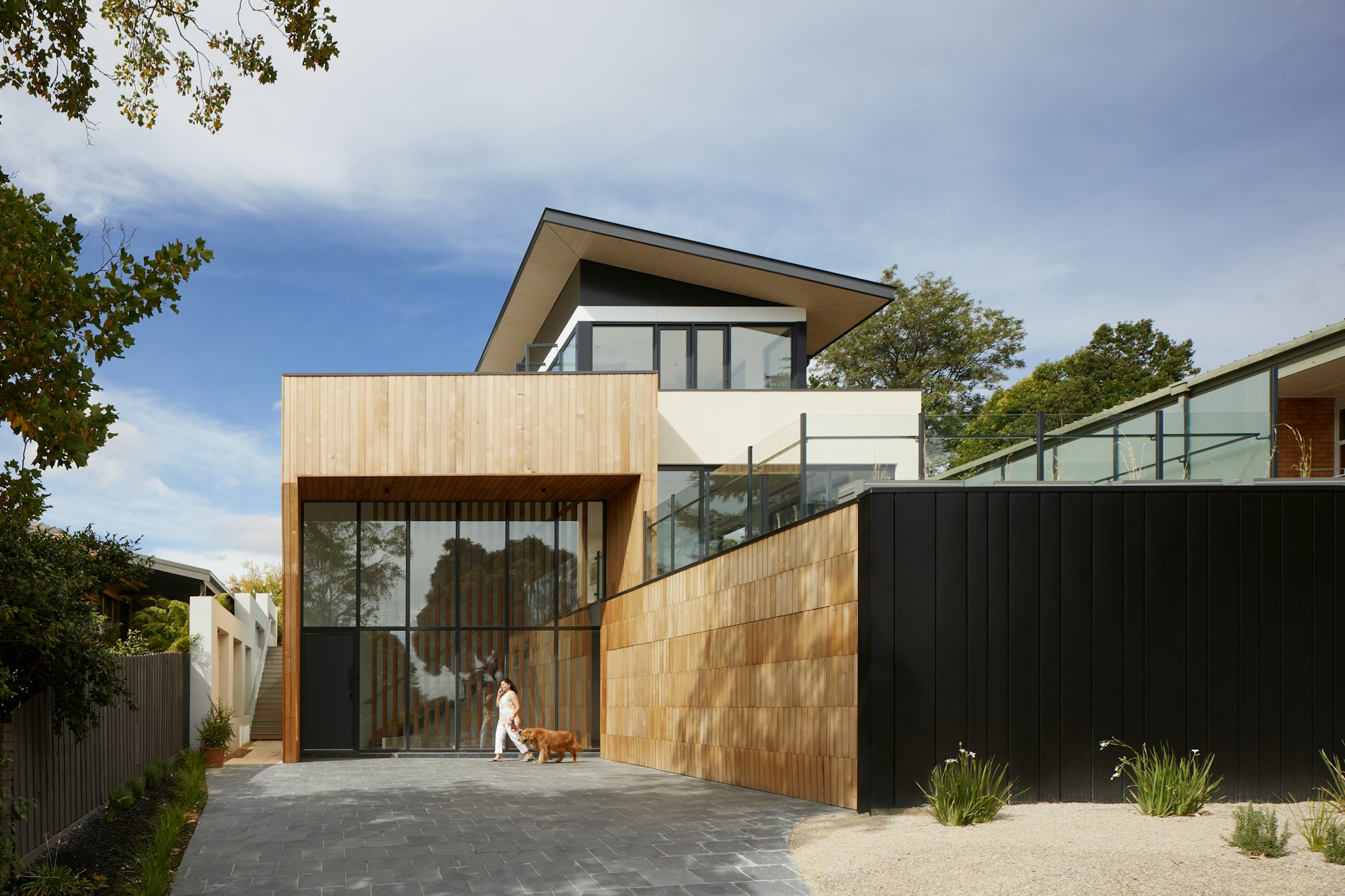Ever wondered why some rooms just feel right and others don't? The spaces we inhabit have a huge impact on our mood and wellbeing, often in subtle ways we don't even realise.
When designing your home, applying some psychology at the early stages can help you create rooms perfectly suited to you. Whether you're building from scratch or just redecorating, understanding how different layouts, styles and features influence the mind can help build your best space.
In this article, we'll explore some of the key ways psychology and design interact in the home. You'll discover how to apply smart design thinking to boost relaxation, productivity or sociability in any room. By the end, you'll have the knowledge to make your home a place that truly enhances your happiness and supports your lifestyle goals. The power to shape your ideal space is in your hands!
How Home Design Impacts Mental Health and Well-Being
The spaces we inhabit have a profound effect on our well-being. When designing your home, consider how different rooms and layouts can influence your mental health and happiness.
Having access to natural light is vital for regulating your circadian rhythm and mood. Maximise windows and skylights, especially in living areas where you spend the most time. Keep curtains open during the day to let the sunshine in.
An open-concept space promotes feelings of freedom and connectivity. Knock down unnecessary walls to create a more open flow between rooms. Open shelving and minimal clutter also give an airy, unconfined feel.
Zoning different areas for different activities helps you unwind. Create a relaxation zone for reading or yoga, a entertainment area for watching TV, and a work zone for productivity. Having spaces dedicated to specific purposes makes it easy to shift gears mentally.
Bring nature inside with houseplants or natural materials like wood and stone. Having lush greenery and organic textures around you can lower stress and boost concentration and creativity.
A harmonious colour palette has a soothing, uplifting effect. Choose a main colour you love and accent with complementary shades for a cohesive look. Warm sunset tones are energising, while cool blues are calming.
Creating a home tailored to your needs and preferences benefits both your physical and mental health. Paying attention to how different design elements influence your mood and daily habits results in a space that nurtures and rejuvenates you. Your home should be your sanctuary.
Key Psychological Principles for Residential Construction
If you want spaces that uplift and inspire, pay attention to a few key psychological principles during the design process.
Natural light
Exposure to natural light boosts mood and mental well-being. Include large windows, skylights or solar tubes to maximise daylight in the home.
Biophilic design
Incorporating natural materials, plants, water and natural views activates our innate connection to nature. Things like wood accents, indoor plants, stone elements or an aquarium can help.
Flexibility
Open-concept spaces that can adapt to changing needs promote a sense of freedom and control. Movable walls, multifunctional furniture and zones for different activities enable flexibility.
Personalisation
The ability to customise a space to reflect your identity and interests leads to greater satisfaction and attachment. Provide opportunities for personal touches like an accent wall, gallery space or built-in shelving.
Zones for solitude and socialising
Having dedicated spaces for alone time and connecting with others supports both independence and relationships. A mix of open and enclosed areas, private nooks and entertainment zones caters to these needs.
Creating a Sense of Belonging Through Design Psychology
A sense of belonging is a basic human need. Incorporating design psychology principles that evoke this feeling in your home can help create spaces where you and your loved ones feel content and at ease.
Use natural materials
Incorporate natural materials like wood, stone and woven textiles. These connect us to nature and the outdoors, eliciting feelings of warmth and comfort. Wood and neutral tones in particular make a space feel serene and livable.
Include personal touches
Add personal items like photos, art, books and collectibles. Having representations of friends, family and hobbies helps make a house into a home. Group collections together or create a gallery wall for maximum impact.
Create distinct zones
Zone your space into areas for different activities like lounging, dining, entertainment and work. Transitional spaces in between, like hallways, staircases and entryways also deserve design attention. Having purposeful places for all aspects of life ensures everyone has their own spot to do as they please.
Focus on lighting
Layer ambient, task and accent lighting to set different moods. Ambient light fills a room, task lighting aids activities like reading, and accent lighting highlights architectural details or artwork. Dimmer switches give full control for day or night.
Keep an open layout
An open-concept space connects people and activities. It provides sight-lines between areas so you can see and interact with others no matter where you are in the home. If privacy is desired, use architectural elements like columns or a change in flooring material to subtly divide an open space.
Boosting Mood With Colour and Lighting
Colour and lighting can have a significant impact on your mood and mental well-being. Choosing the right hues and brightness levels for your space can help boost your mood and make your home a sanctuary.
Colour
The colours in a room can energise or relax you. Warm tones like reds, oranges and yellows are stimulating and mood-boosting. Cool blues and greens are more calming and serene. If you want a space that provides an emotional lift, incorporate vibrant accent walls or decor in warm sunset shades. For a Zen den or bedroom, choose a palette of teals, turquoises and sea greens.
Consider how much natural light a room gets when selecting a colour scheme. South-facing rooms will appear brighter even with deeper, richer shades. North-facing rooms may require lighter, airier colours to prevent a dim, closed-in feeling. The more light a space has, the more saturated the colours can be without overwhelming the room. In low-light areas, keep things light and bright.
Lighting
In addition to natural light, artificial lighting plays a role in your mood and productivity. Harsh overhead lighting can make you feel exposed and irritable. Soft floor and table lamps create a cosy glow that calms the mind. For tasks that require focus like work or hobbies, use directional spotlights or task lighting.
Dimmers give you control over the level of brightness. At night, lower the overhead lights and use lamps for a warmer ambient glow. During the day, increase the brightness for an energising environment. Consider installing a dimmer switch so you can easily adjust the lighting to suit your needs and mood.
The colours and lighting in your home have a significant impact on your wellbeing. Choose a colour palette and lighting design that creates the right ambience for relaxation, socialising or productivity. Your space should feel bright and cheerful when you want an emotional lift, or dim and cosy when you need to unwind. Boost your mood and make your home a sanctuary by incorporating the perfect balance of vibrant and calming colours along with natural and artificial light.
Optimising Comfort and Reducing Stress Before You Build
When designing a home, it's important to consider how the layout and features can reduce stress and increase comfort for the occupants. Several factors play a role in optimising the space for wellbeing before construction begins.
Natural Lighting
Exposure to natural light during the day helps regulate our circadian rhythm and mood. Include large windows, skylights or solar tubes in areas where people spend most of their time like living rooms, kitchens and bedrooms.
Zoning
Create dedicated spaces for different activities like sleeping, cooking, exercise or relaxation. Having defined zones for the main functions in a home establishes a sense of order and control over the environment. Use room dividers, change in flooring types or ceiling heights to zone spaces.
Storage
Ample and convenient storage reduces clutter and the stress it causes. Closet space, cabinets, shelving and storage furniture should be designed into the initial plans. Consider extra storage for seasonal items in the garage or attic.
Ventilation
Proper ventilation, heating and cooling improve comfort and indoor air quality. Instal energy efficient HVAC systems, exhaust fans in bathrooms and kitchens and consider attic fans or whole house fans. Opening windows also provides natural ventilation and connects occupants to the outside.
Flexibility
The ability to adapt a space to changing needs over time gives a sense of freedom and control. Choose open-concept designs, moveable room dividers and multifunctional furniture. Consider how spaces could be rearranged or joined in the future.
Thinking about how to maximise comfort and minimise stressors in the design stage will result in a home that supports the wellbeing of its occupants for years to come. Considering factors like natural light, dedicated zones, ample storage, proper ventilation and flexibility in the layout help to create a space where people can feel at ease.
Conclusion
Whether you're building a new home or just redecorating, creating an environment optimised for wellbeing will help you feel happier and healthier within your own four walls. Pay attention to lighting, greenery, storage, and multifunctional spaces. Focus on a balance of natural and artificial light, lots of plants, keeping clutter to a minimum, and making the most of each area.
Make your space work for you, and you'll reap the benefits for years to come. Now get designing - your ideal home awaits!




















